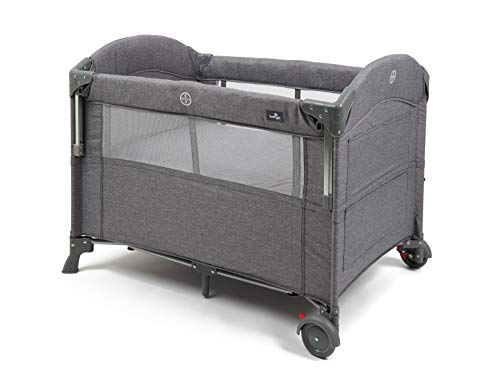How to Choose a Sale Cot
Mortuary Cots are an essential piece of equipment in funeral hospitals and funeral homes. They enable staff to transport bodies in a safe and respectful manner. They provide a respectful and comfortable place to rest the body.
COTS items play an essential part in the federal marketplace, but they aren't easy to manage. This blog will explore how COTS fit into GSA schedules and other government procurement rules.
Cost-effectiveness

The use of commercial-off-the-shelf (COTS) products allows procurement agencies to gain efficiencies by purchasing items that are readily available from the marketplace. This helps reduce development time and lowers life-cycle costs. It also enables procurement agencies to reap the benefits of technological advancements and industry experience.
However it is crucial to note that COT designations are a subjective matter and that different organizations may have a differing lens to define what is an actual COTS item. This can be problematic for a company that is relying on a consistent method to calculate accurate government prices. GPOs and wholesalers, for instance, typically have lists that are not identical to the list used by manufacturers to determine government pricing. A written SOP and a COTS Reference Library are crucial elements to apply an efficient and consistent method of distributing COTs.
Reliability
A sale cot is an essential purchase for mortuary services. It should be reliable and sturdy enough to withstand high-use. It should be simple to transport, and also set up. The manufacturer should offer good support for customers in the event of any issues after sales. Also, take feedback from your employees prior to making the final decision. They are the ones who will use the cots, and can confirm if it's robust and reliable.
Wholesalers and GPOs typically assign COT designations that do not match the manufacturer that supplies the list of COTs. This is due to various factors, such as changing business models, mergers and acquisitions. This presents challenges for the consistent application of a subjective lens to classify COTS.
Durability
The durability of sale cots is crucial since they have to be able to stand up to regular use and transport. These cots are used by a variety of funeral homes to display the remains of deceased people. They must be able to support the weight of caskets as well as other objects. Cots should also be resistant against corrosion and possess an easy-to-assemble and stable structure. It is essential to select a business that offers customer service and can help with any issues that could arise following the purchase.
Solid wood cots make the ideal furniture for babies because they are sturdy and less prone to contain toxic chemicals or off-gassing as compared to composite materials like MDF or Chipboard. They're also more attractive than other alternatives that are less expensive.
If you're looking for a cot that doubles as a lounge chair The Westport design from Silver Cross might be the best choice for you. The cot is constructed of a sturdy material, and it is available in three different levels of height for infants who are growing. The instructions aren't always clear however, this cot is worth it once you know the rules.
The Helinox Cot One may be the lightest cot available, however, it's not as durable as other models that we tested. It also contains a lot of components and therefore takes longer to put together than other cots. It's a comfortable cot and a great option for backpackers. It weighs 14 ounces less than the Thermarest Luxury Lite or Sleep Rite.
Safety
If you are supplying children's cots, ensure that they are in compliance with the safety standard. This is an essential step to prevent injuries to children and deaths. This can be done by asking your supplier whether their products have been independently tested. Request them to supply you with a copy of the results. You can also arrange your own tests.
It's important that you check the safety of your cot prior to you let your baby sleep in it, regardless of whether it's brand new or used. Check for a certificate of compliance from the manufacturer, as well as explicit labels and warnings. It should also be free from any sharp edges, protrusions or gaps that could entrap the child's foot or finger. Additionally there shouldn't be any footholds in the cot that can be used by a child to climb out.
When selecting a cot, ensure that the mattress is clean and flat. It should fit snugly with no gaps. The bottom edge of the lowest rail shouldn't be higher than 30mm from the base of the mattress. If the base of the cot is adjustable, make sure it is set to the lowest position.
Check that the slats and filler bars are securely fixed, and that they don't contain any small holes that could catch clothing. Bolts, nuts, and corner posts must not protrude more than 5mm to prevent children from catching their fingers. Make sure cot for sale isn't in close proximity to drapes or blinds that are loose and could easily be snatched by tiny hands.
Also, look for a label which indicates that the cot has been tested according to the standards required by law and is in compliance with Australian Standards AS/NZS 2172:2003 Cots for household use-safety requirements. This is the only way to ensure that the cot you are purchasing is safe and suitable for sleeping. It is against the law for antique stores, dealers, and second-hand shops to sell antique cots with no labels or certificates.
While most designers and manufacturers work hard to ensure their products are safe, accidents can occur. Older cots used by previous children may not be safe standards and may pose a risk of being suffocated or ingestion of foreign bodies.
